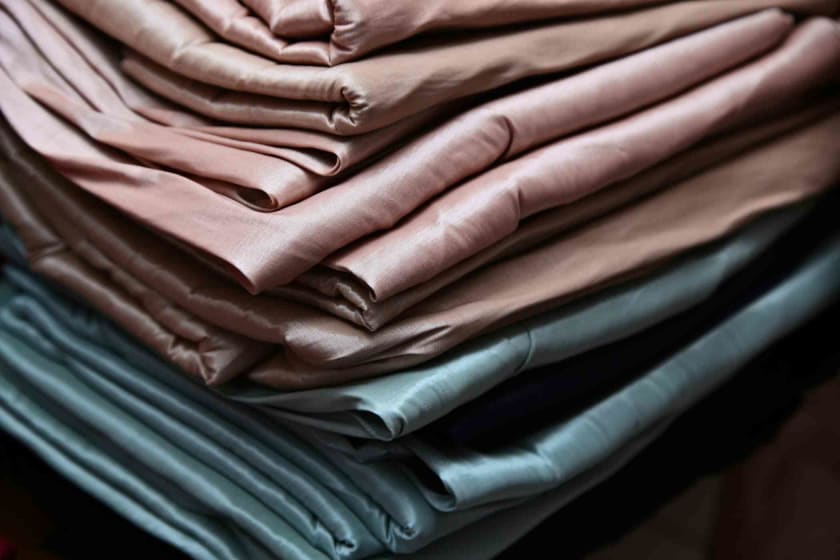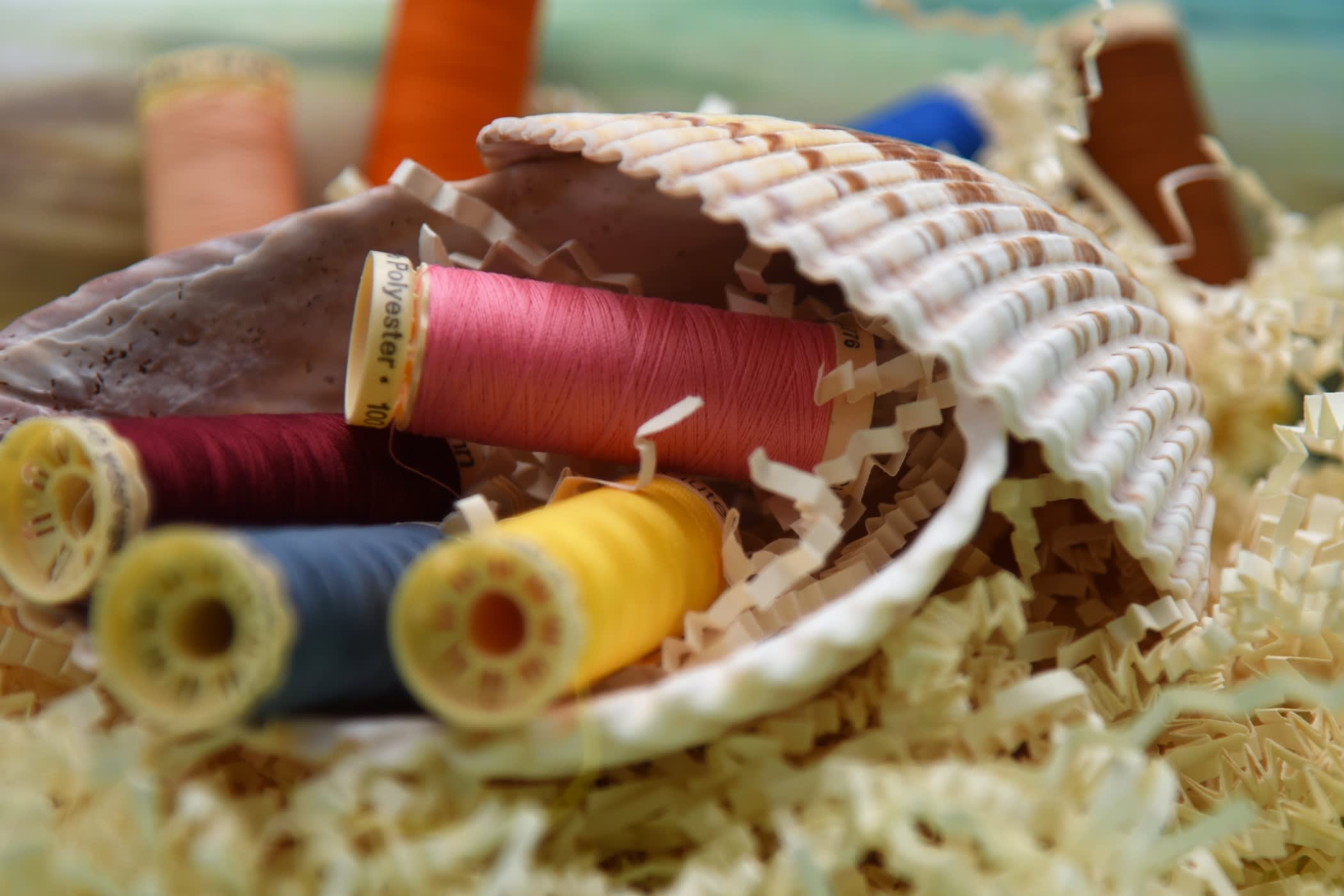A Brief Guide on Taffeta: Here’s What Brands & Manufacturers Should Know



| Fabric name | Taffeta |
| Fabric also known as | Shot silk, paper taffeta |
| Fabric breathability | High |
| Moisture wicking and heat retention | Low |
| Major Producers | India, China, Pakistan, Italy and France |
| Uses | Wedding gowns, evening wear, blouses, party attire, curtains, insulation, sleeping bags |
Origins
Taffeta is a plain woven fabric made from silk, rayon and polyester. The word ‘taffeta’ is derived from 'Tafta' which means 'twisted woven' in Persian. Taffeta is believed to have originated in ancient Persia. However, the modern version of this fabric was first woven in Italy and France. Taffeta has traditionally been made out of silk. It's more common today to find taffeta made from rayon and polyester.
Production
The steps to manufacture taffeta are as follows:
- Monomer alcohol is produced by reacting ethylene with dimethyl terephthalate.
- Monomer alcohol is combined with terephthalic acid to produce a polymer known as polyester.
- Polyester is extruded into long ribbons and left to cool.
- The ribbons are then cut into small pieces and melted.
- The melted product is extruded through a spinneret.
- The stands produced are left to cool.
- The resulting product (i.e., polyester fibres) is dyed into the desired color.
- The polyester fibres are shipped off to merchants. These merchants produce taffeta either by hand or using machines.
Types
There are different types of taffeta. The key features of each are outlined below:
| Type | Description |
| Silk taffeta | This is the original form of taffeta which is traditionally made from silk. |
| Synthetic taffeta | This is the most common variety of taffeta today. |
| Yarn-dyed taffeta | Yarn-dyed taffeta is crisp and firm as it is dyed before getting woven. |
| Piece-dyed taffeta | Piece-dyed taffeta is distinguished by its softness. It is much softer than its counterparts. |
| Paper taffeta | This is an extra thin variety of taffeta made from silk or polyester. |
| Shot silk taffeta | Also known as chiné or Pompadour taffeta.Shot silk taffeta is woven using different coloured threads. This gives it a distinct iridescent look. |
| Antique taffeta | This type of fabric is stiff with lumps of yarn in between. |
| Moire taffeta | This type of fabric has a distinct watermark pattern. |
Uses

Taffeta fabric is delicate and prone to damage. As such, it is not commonly seen in daily wear. Taffeta is used in high end fabrics such as wedding and party dresses. Other applications of taffeta include linings for jackets.
While taffeta is a delicate fabric, manufacturers do use it for products aside from clothing. During World War II, taffeta was used to make parachutes. Today, taffeta is used to make consumer items such as umbrellas and handbags. Taffeta is also used in the stuffing of sleeping bags as well as to make certain forms of insulation.
Major Exporters
India is the largest exporter of taffeta fabric. Taffeta is also produced in Pakistan, China and Iran. The finest taffeta continues to be produced in Europe. To this end, Russia, Italy and France are moderate producers of taffeta.
Environmental Impact
There's a growing need among taffeta manufacturers to shift to sustainable means of production. Silk is the ideal option for brands and manufacturers. This is because silk is biodegradable and one of the most environmentally friendly textiles. Furthemore, there are no toxic intermediate products created through silk manufacture.
(That said, silk production has raised concerns among animal rights and labour activists. This is because of labour exploitation in some sectors. Also, silkworms used to make silk are boiled alive in their cocoons.)
Taffeta made from polyester and rayon is detrimental to the environment. Polyester and rayon are non-biodegradable fabrics. The production process for both fabrics releases toxic chemicals which pollute the hydrosphere.
Polyester in particular is made from petroleum which is a nonrenewable resource. Petroleum production has historically been a catalyst of climate change. To sum up, polyester and rayon can decrease the sustainability rating for companies. Brands and manufacturers should keep this in mind. They may want to use silk-based taffeta for their products.



















